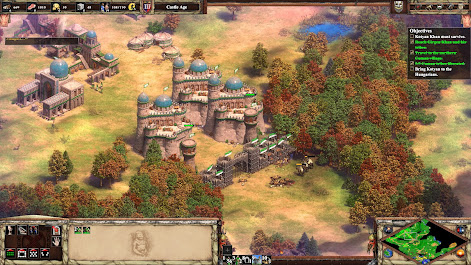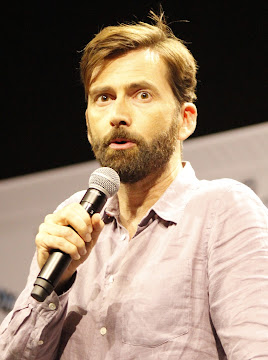The Doctor has a new mission: to guard a mysterious vault located under a university. He is aided in this quest by Nardole, River Song's friend and ally. The Doctor befriends university worker Bill Potts and decides to recruit her as his new companion, so he can "sneak off" and undertake adventures in time and space, to Nardole's displeasure. But when Earth is attacked by an invading alien force, the Doctor realises that the only salvation might be the very danger which lies within the vault...
The tenth series of Doctor Who since its return in 2005 marks the end of Peter Capaldi's run as the Twelfth Doctor and also the departure of Steven Moffat as showrunner, who'd helmed the show since its fifth series. For this last season, the grumpiness of the Twelfth Doctor was somewhat scaled back in favour of a (relatively) friendlier figure, and was given a mentor-student relationship with his new companion Bill after the more intense and familial relationship with Clara.
Things kick off with Christmas special (and the only episode to air in 2016) The Return of Doctor Mysterio, a splendid superhero pastiche in which the Doctor inadvertently gives young Grant Gordon amazing powers after he accidently ingests some alien technology. The Doctor encourages Grant to use his newfound powers for good, occasionally checking in on him over the years. The Doctor, Grant and journalist Lucy Fletcher then become embroiled in a conspiracy by the mysterious Harmony Shoal corporation to conquer the world. A total romp of an episode with winning performances by guest stars Justin Chatwin and Charity Wakefield, the episode's breezy pace and lighter tone (after the intensity of Series 8 and 9) comes as something of a relief.
The season itself kicks off with The Pilot, which sets up the season arc with the Doctor guarding a mysterious vault and meeting new companion Bill. Season-openers which also serve as companion introductions and arc-openers tend to be a bit messy, with the alien threat of the week disposed off rather summarily so the episode can focus on introductions. The Pilot is better than a lot of episodes in its vein, thanks to strong performances from Pearl Mackie as Bill and guest star Stephanie Hyam as Heather, and the episode also sets up another plot point that becomes important in the finale, so its more satisfying than most.
Smile is a bit Doctor Who-by-numbers, with robot servitors on a colony planet rebelling against their masters, but it has some good energy and a couple of fun twists. Thin Ice, set in 1814 London during last of the Great Frost Fairs, is likewise standard but watchable with some enjoyable guest stars and period detail.
Knock Knock is a Doctor Who haunted house story, with Bill and some friends moving into surprisingly cheap new house with a friendly landlord (an outstanding performance by the legendary David Suchet) just before Shenanigans ensure. The story is tense, the disposable side-characters well-characterised in a short space of time and Suchet's delightful performance elevates the whole thing about the norm.
Oxygen is the season's "base under siege" story, using the same fairly obvious sets as previous stories Under the Lake, Before the Flood and Sleep No More. There's some fun ideas here, like smart spacesuits going rogue and a company so cheapskate it charges its employees for the oxygen they use, but the episode's best and most unsettling idea is the Doctor going blind as a result of oxygen starvation and exposure to space. Otherwise it's fairly disposable.
The next three episodes constitute a three-part arc, consisting of Extremis, The Pyramid at the End of the World and The Lie of the Land, in which alien "monks" invade Earth but can only do so if they are invited willingly. Extremis sets up the situation and has the Doctor recruited by the Vatican to read an ancient text that has sent everyone else mad. There's some terrific imagery (a confused TARDIS-transported Pope emerging from Bill's bedroom, to the consternation of her girlfriend), some fun lines and a winning performance by Peter Capaldi as he pretends not to be blind. The Pyramid at the End of the World ups the ante as the Doctor has to join forces with the world's major governments and militaries to avert the alien invasion and try to stop a disaster before it happens. There's some great performances and tension in this episode, with the Doctor's own hubris eventually defeating him.
Unfortunately, as is often the case, the setup is let down by a poor finale. It feels that The Lie of the Land should have been a two-parter with much greater exploration of a life on the monk-ruled planet. Instead, it's a fairly knockabout adventure with a rushed finale. The high point is the regular restoration of Selena Gomez as Missy to the recurring cast and her outstanding performance.
Empress of Mars marks the departure (so far) of regular Doctor Who writer Mark Gatiss from the series, and it's a pretty great adventure, taking the Doctor and Bill to Mars in the 19th Century where an Ice Warrior has brought a detachment of British soldiers to the planet to help him rescue his slumbering Ice Queen. Seeing the Ice Warriors on their homeworld of Mars (for the first time on-screen) is fun and the incongruity of Victorian soldiers in space - possibly drawing on the imagery of the Space: 1889 roleplaying game - is great. If there is a weakness, it's that the Ice Queen is not a well-written adversary.
The Eaters of Light marks a bit of history by being written by Rona Munro, who also penned the very last story from the classic run of the series in 1989, Survival, making her remarkably the only writer to have penned both incarnations of the programme. It's a fairly solid story featuring the Doctor and Bill investigating the fate of the Ninth Legion of the Roman Army, and the interesting idea of the Doctor using the TARDIS translation system to overcome cultural differences between warring factions who can't even understand one another. The ending is a little underwhelming though.
World Enough and Time and The Doctor Falls forms a two-part story and is quite a powerful one. The Doctor has seemingly rehabilitated Missy and sends on her on an adventure to monitor her performance. This leads to a colony ship trapped in the gravity field of a black hole, where time is running differently on each deck. There's some terrific imagery and Pearl Mackie delivers her best performance as Bill Potts. There's also the superb idea of Missy's move towards being "good" being countered by meeting her past incarnation as the Master (a returning John Simm) who acts as the devil on her shoulder, drawing her back towards the dark side. Throw in the very early Cybermen and the setup for a war story between them and a beleaguered group of survivors, and it makes for a decent, busy story that justifies its length. One weakness of the story is that the manner of Bill's departure - apparently dying but being rescued through a time-wimey loophole and then goes off to have more adventures in time and space with a superpowered female friend - is virtually identical to how Clara departed the previous season, and feels redundant.
Peter Capaldi departs in Twice Upon a Time, where he is reunited with the First Doctor (David Bradley, replacing the late William Hartnell and Richard Hurndall) as they both struggle with their impending regenerations. There's some great ideas here - glass people, the return of Dalek Rusty, Mark Gatiss playing the Brigadier's father - but some over-indulgence and a questionable portrayal of the First Doctor as unrepentantly sexist (far more than was really the case). But overall it's a reasonable goodbye to Capaldi and, indeed, the entire Moffat era of the show.
The tenth series of Doctor Who (****) since its return is a very strong run of episodes, although lacking an all-time classic installment. Capaldi anchors the season with his superb performance, and Pearl Mackie makes for a very likable companion. It is a consistently very solid season, a quality that becomes more variable in the seasons that follow. The season is available to watch on BBC iPlayer in the UK and on HBO Max in the USA.
- 10X: The Return of Doctor Mysterio ****½
- 10.1: The Pilot ****
- 10.2: Smile ***½
- 10.3: Thin Ice ***½
- 10.4: Knock Knock ****
- 10.5: Oxygen ***
- 10.6: Extremis ****½
- 10.7: The Pyramid at the End of the World ****½
- 10.8: The Lie of the Land ***½
- 10.9: Empress of Mars ***½
- 10.10: The Eaters of Light ***½
- 10.11: World Enough and Time ****½
- 10.12: The Doctor Falls ****½
- 10.13: Twice Upon a Time ****










